When you write a cookbook (or two) about German cooking, almost everyone you meet will have an opinion about their favorite German recipes. In the run-up to publication of Classic German Cooking, I thought it’d be fun to talk to friends and acquaintances in Berlin and beyond about their favorite German recipes, and maybe even get a bonus recipe here or there, if someone’s generous enough to share. If you’re a passionate cookbook reader like me, you know that the stories around food are often at least as interesting, if not more, than the food itself. This week I’m featuring Thomas Struth and his mother’s plum pancakes.
Last week, I got to my visit my friends Tara and Thomas in their gorgeous apartment in Zehlendorf. Their building was built in 1910 and the minute I walked into their inviting kitchen, I had to laugh. They have the exact same tiles as my kitchen has—and my building in Wilmersdorf was also built in 1910! Clearly these were the “it” tiles of that era. Their tiles are in better shape than mine, and also have two spiffy lines of blue tiles framing the little scenes. Isn’t this kitchen the most beautiful, inviting space ever? It looks over a serene garden. The built-in kitchen is an original Poggenpohl from the ‘80s. It’s such a good blend of old and “new.” (The ‘80s were forty years ago, guys. Help.)
Anyway, I was there to chat Classic German Cooking with Tara and Thomas. Tara is originally from Hawaii and Thomas grew up in West Germany; together they’ve lived in Berlin for about 15 years. Thomas wanted to make me his mother Gisela’s Pflaumenpfannkuchen (plum pancakes), which Tara says always make him go misty-eyed. I was so honored! Here are the plums he used; they should be pitted and then sort of butterflied, without separating them, so that one plum fans out into four attached segments, like so:
You make a thin pancake batter and melt some butter in a skillet: nonstick is easiest, but if you’re brave, a seasoned cast-iron skillet works too. When the butter foams, you add a ladleful of the batter and then arrange the plums on one side of the pancake as it cooks. Then you drizzle a little more batter over the top of the plums to anchor them.
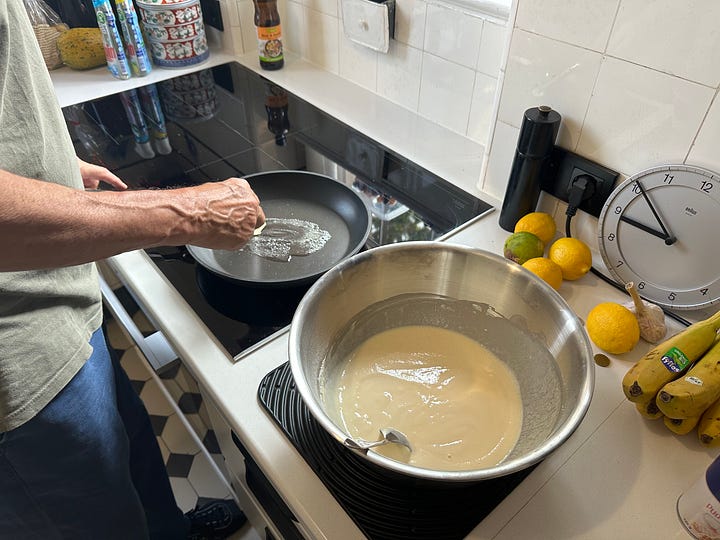
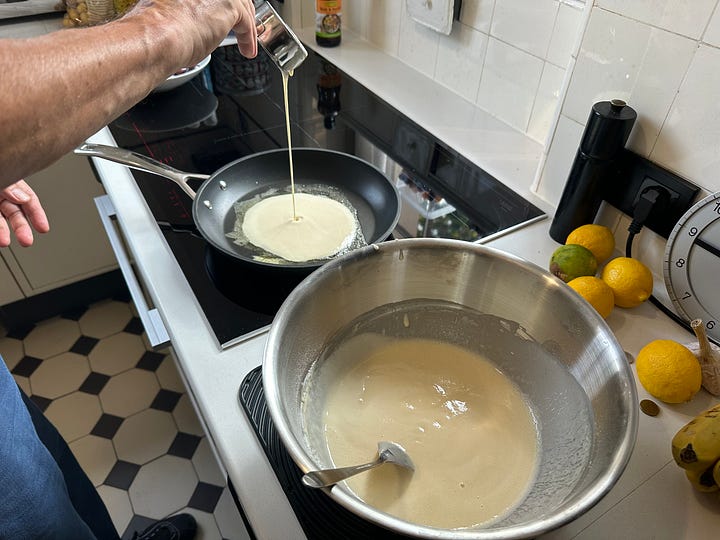
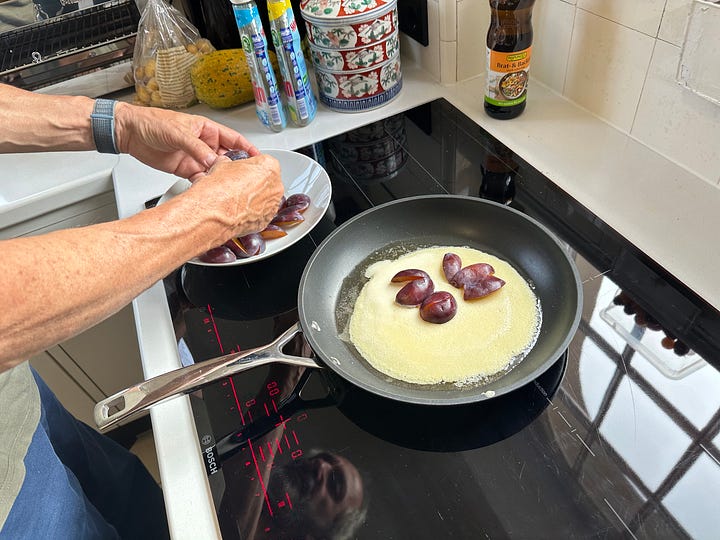
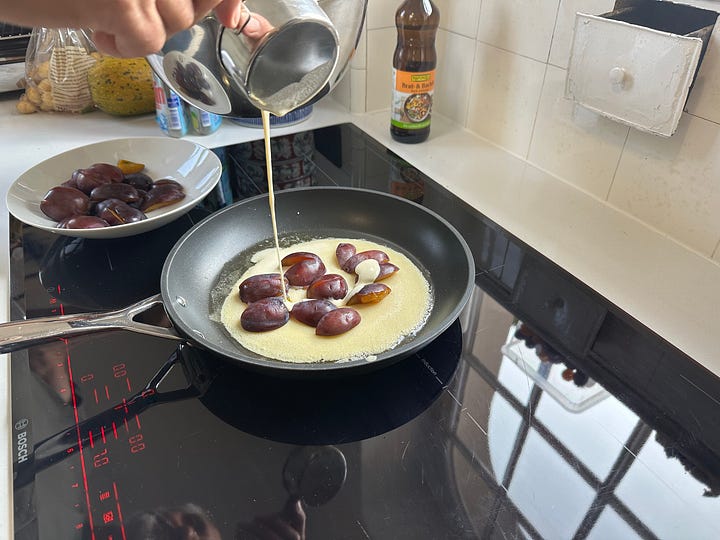
After a few minutes, you flip the pancake (you can do this by inverting a lid over the pan, flipping the pancake onto the lid, then sliding the pancake back into the pan) and let the other side, the one with the plums, cook until the plums are caramelizing, a few minutes more.
When it’s ready, you flip it over onto a plate, shake some powdered sugar on top and get to work eating it. Ideally in a perfect pool of late-summer sunshine.
Thomas told me that his mother had gone to art school before getting married and having children. When the children were young, she was a homemaker and put her artistic ambitions aside. She cooked for the family at both lunch and dinner, like so many other West German women of that era. Later, when her children were grown, she returned to her art and became a ceramicist. Art is clearly in their genes; Thomas is a world-famous photographer.
Thomas says that Gisela’s pancakes should be made with ripe plums, so that they don’t have to cook too long to begin to caramelize. You can use regular all-purpose flour or spelt flour, but if you use spelt, you will have to add a bit more milk or water. The sparkling water is supposed to help leaven the pancakes a little, but it’s not mandatory.
Pflaumenpfannkuchen
Damson Plum Pancakes
Serves 4
2 large eggs
400 ml milk
1/4 teaspoon salt
200 g all-purpose flour, sifted
1 to 2 Tbsp sparkling mineral water, optional
1 to 1.5 kg ripe damson plums
Butter or margarine for the pan (Thomas’s mother used margarine, which doesn't burn as quickly as butter)
Powdered sugar, for serving
In a large bowl, whisk the eggs until smooth. Whisk in the milk and the salt. Gradually add the sifted flour and mix well.
Let the batter rest at room temperature for 15 to 20 minutes. Then use a spoon to test whether the batter has the right consistency: It should fall off the spoon like syrup. If it is too runny, add a little more flour; if it is too thick, stir in the sparkling water.
While the batter is resting, wash and dry the plums. Using a small kitchen knife, slice into the plums at the “seam,” but do not cut them all the way through. Discard the pit, then slice each half in half, but not all the way through, so that they are still attached and you can lay them flat.
Place a knob of butter or margarine in a 20-cm round pan over medium heat and melt. Pour in about a quarter of the batter (about 1 1/2 ladlefuls of batter). Arrange some of the plums on top of the batter and drizzle a little bit of batter over the plums to anchor them to the pancake. Let the pancake cook for a few minutes, covering the pan so that the plums soften a little, until golden-brown on the bottom.
Flip the pancake and cook the other side of the pancake until the plums begin to caramelize, about 3 to 4 minutes. Flip the pancake onto a serving plate, plum-side up. Repeat with the remaining cooking fat, batter and plums, cleaning out the pan between batches.
Serve the pancakes dusted with powdered sugar.




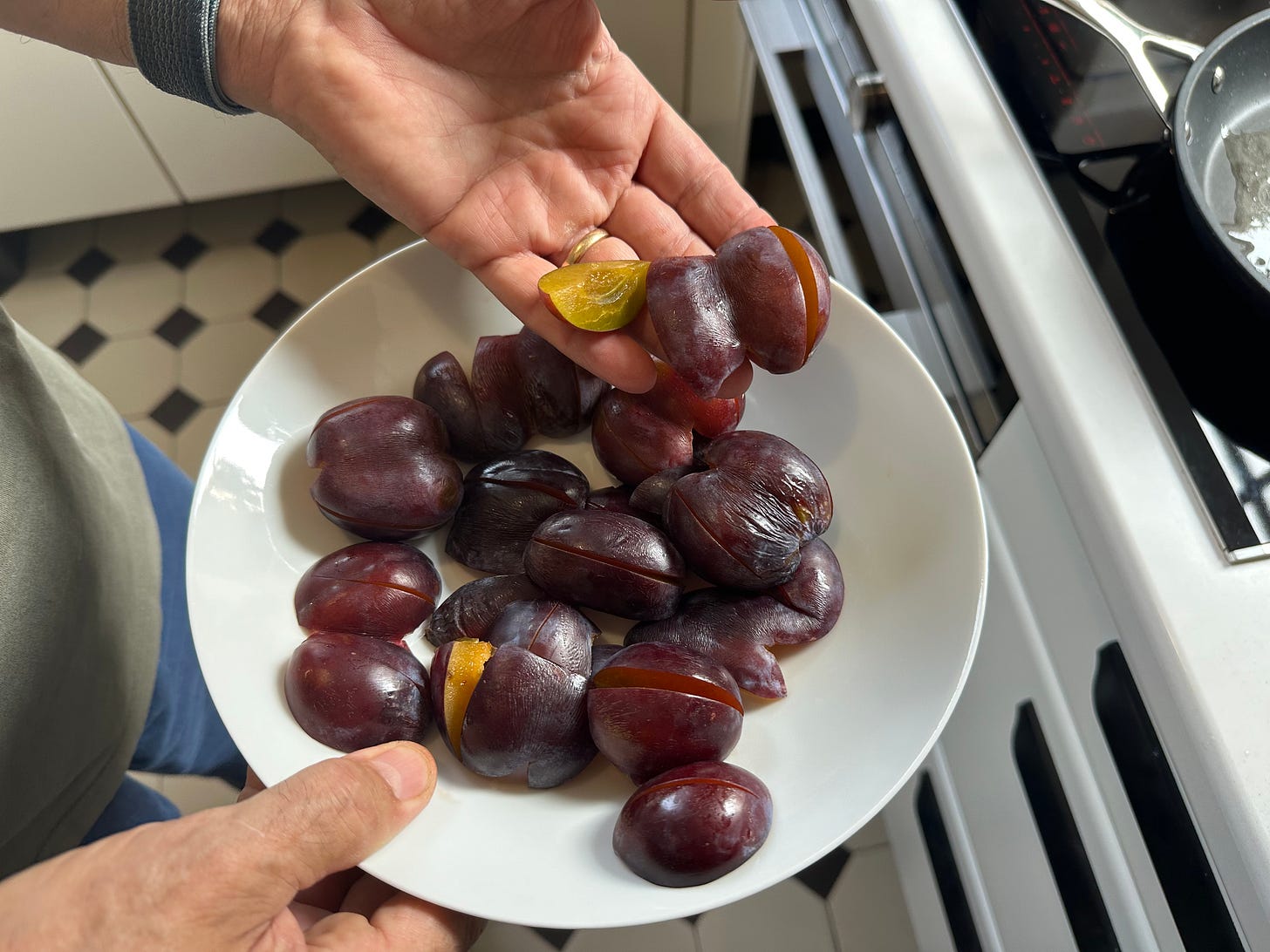
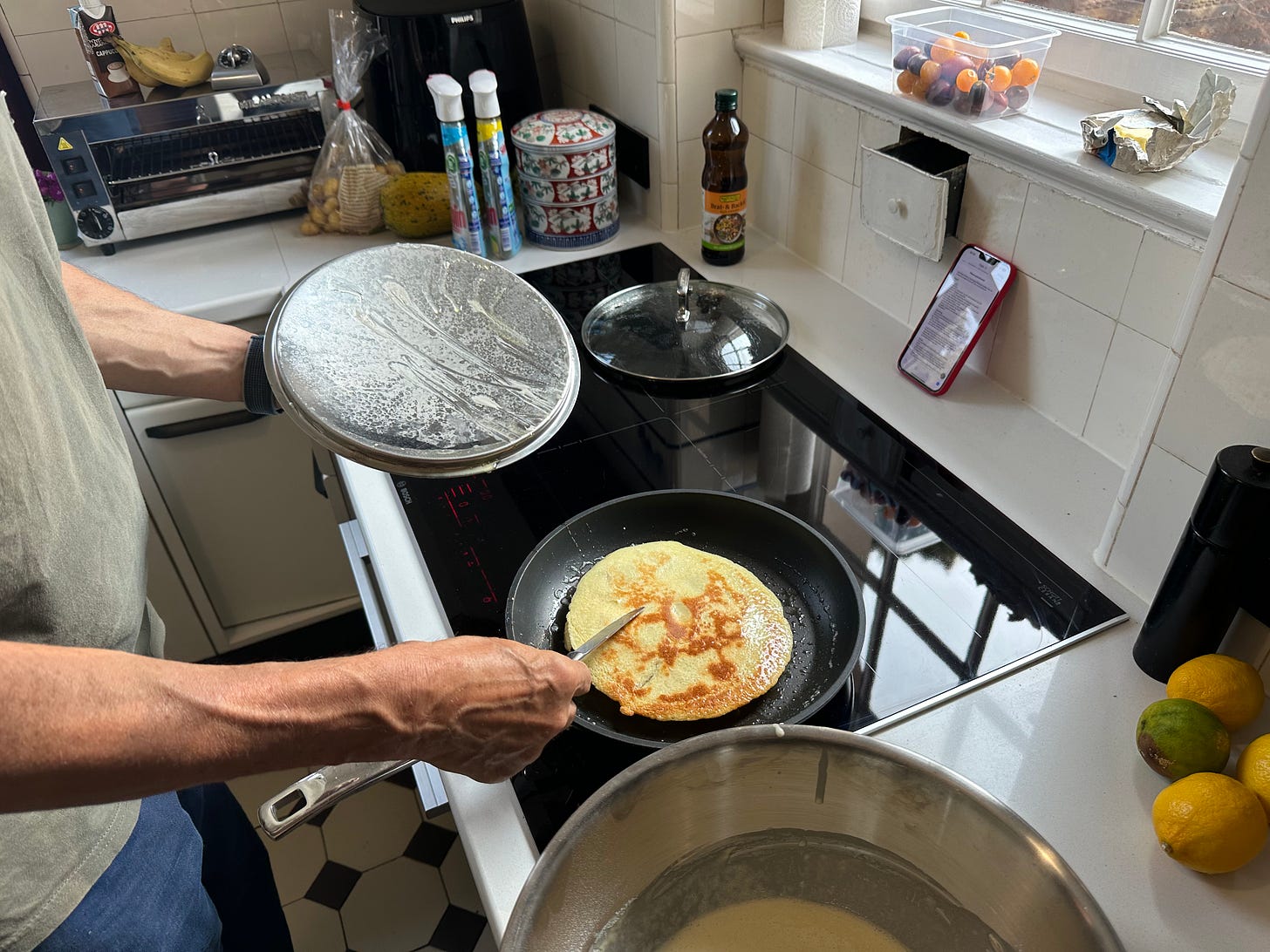
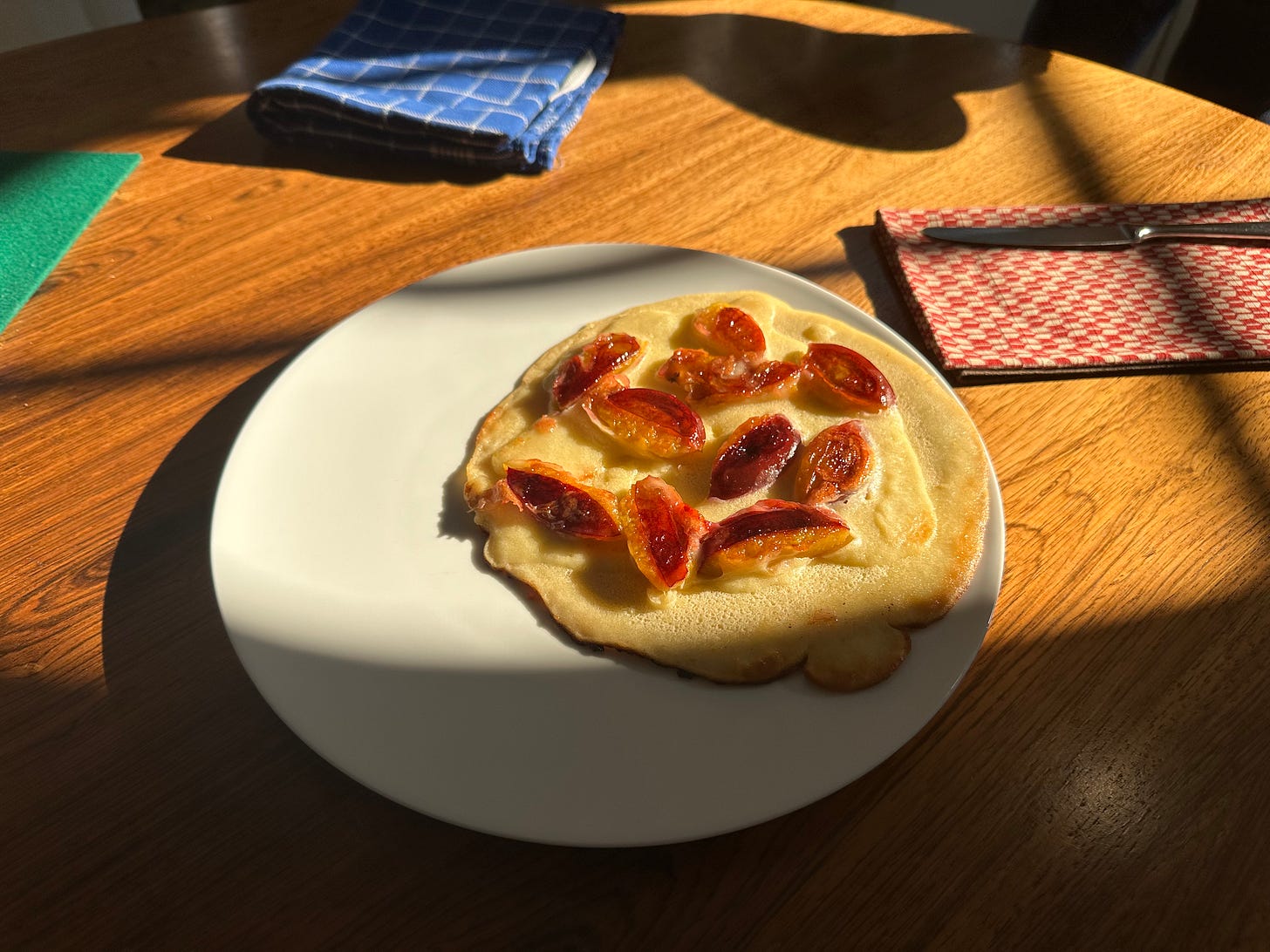
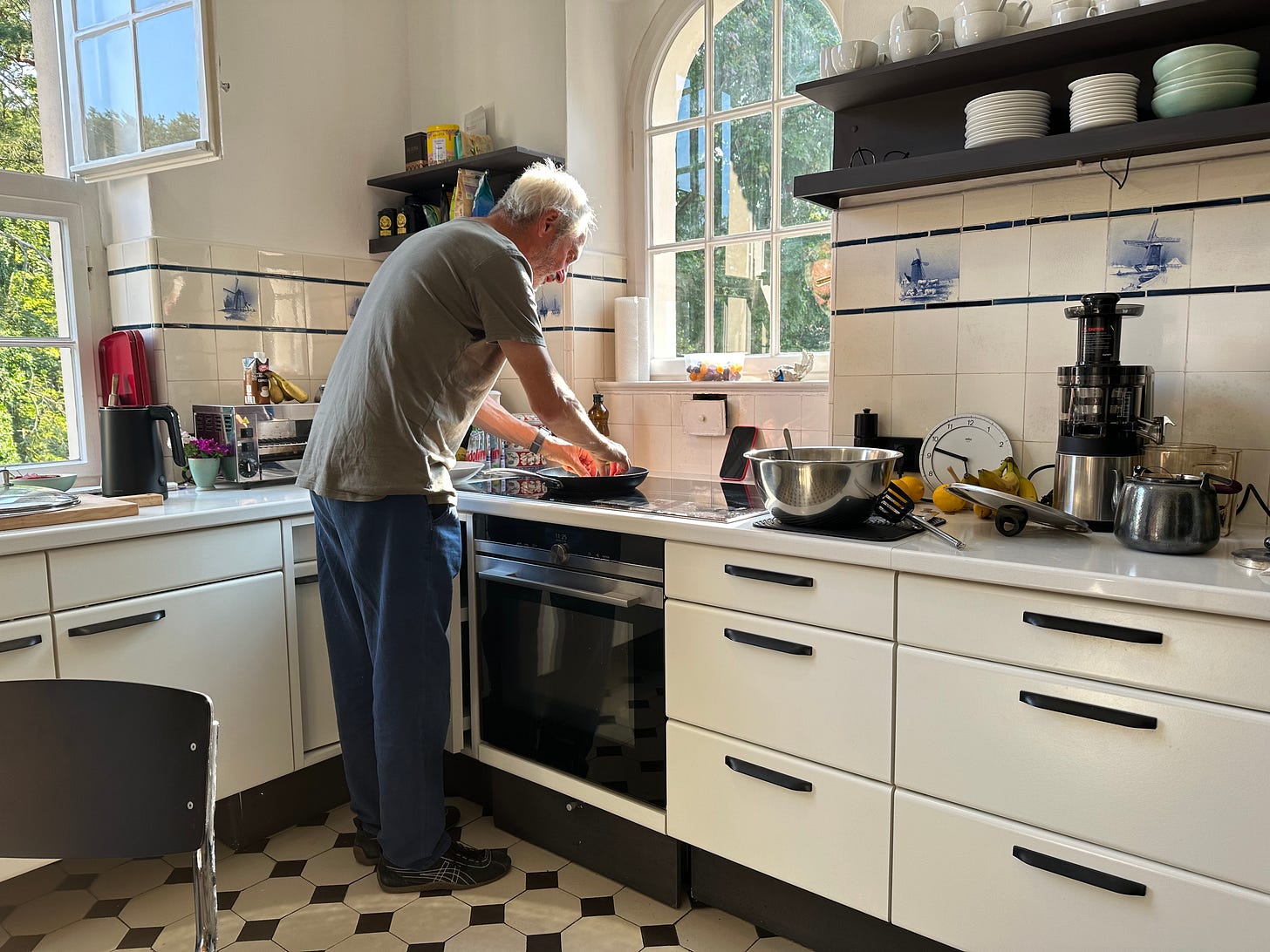
Ooh, interesting! We make pancakes the same way in Belgium but with sliced apples. In the Netherlands they even add bacon!
THOMAS STRUTH!!! This is just delightful, Luisa.